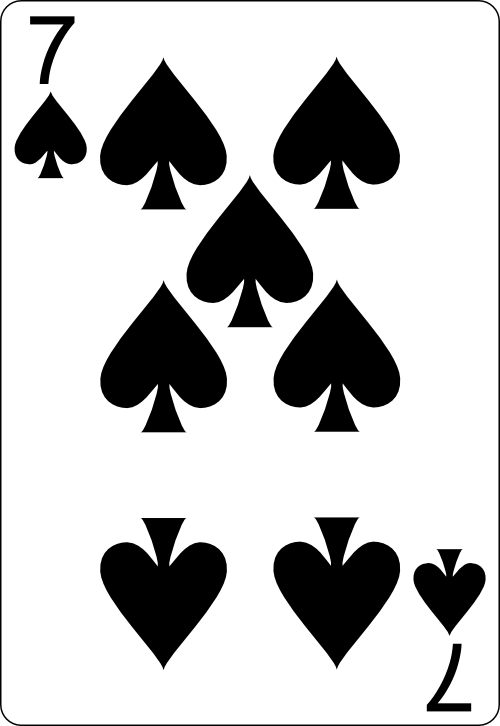The Importance of Postflop Play in Poker
When it comes to the intricate game of poker, mastering postflop play is key to turning the odds in your favor. This critical aspect of the game often separates the novices from the seasoned players. It’s here that the depth of postflop hand analysis truly comes into play.
What is Postflop Play?
In the game of poker, the term ‘postflop’ refers to all actions that occur after the first three community cards (the ‘flop’) have been revealed. This phase of the game is where players get to demonstrate their strategic prowess. It’s during postflop play that players make significant decisions based on their hand strength, opponents’ actions, and the revealed community cards.
Why Postflop Hand Analysis Matters
The relevance of postflop hand analysis cannot be overstated. It’s a tool that offers players a better understanding of their position in the game. Postflop hand analysis involves assessing the strength of your hand in relation to the community cards and calculating the possible hands your opponents might hold.
The outcome of a poker game is often determined during the postflop play. Whether a player decides to bet, raise, call, or fold, these decisions are heavily influenced by the postflop hand analysis. Understanding the potential of your hand and predicting the hands of opponents can significantly increase your chances of success in the game.
It’s important to note that postflop play isn’t just about the cards in your hand. It’s also about observing your opponents’ behavior, calculating pot odds, and strategically planning your moves. Our articles on postflop poker strategy and postflop betting strategies delve deeper into these topics.
In conclusion, mastering postflop play and hand analysis is crucial for any poker player aiming to excel in the game. It’s a skill that requires practice, patience, and strategic thinking. By continually refining your postflop play, you increase your chances of outsmarting your opponents and winning more hands. If you’re interested in learning more, check out our postflop poker tips article.
Understanding Postflop Hand Analysis
Postflop hand analysis is a crucial part of poker strategy. It is during the postflop stage that the majority of the betting occurs, making it a critical juncture in the game. Understanding the basics of hand analysis and the key factors involved can significantly improve your decision-making skills and overall performance in poker.
The Basics of Hand Analysis
Hand analysis in poker involves assessing the strength of your hand in relation to the community cards on the table (the ‘board’) and the potential hands of your opponents. This evaluation helps in making informed decisions about whether to fold, call, or raise.
Postflop hand analysis takes into account not only the hand you’re holding but also the actions of your opponents, the number of players in the game, and the size of the pot. These factors collectively can influence the potential outcomes and dictate your betting strategy.
For a deeper understanding of how hand analysis fits into a broader poker strategy, refer to our extensive guide on postflop poker strategy.
Key Factors in Postflop Hand Analysis
When it comes to postflop hand analysis, some key factors need to be considered.
- Hand Strength: Assess the strength of your hand based on the community cards. Do you have a high pair, a straight, a flush, or a full house? Or do you have a weak hand that needs improvement?
- Opponents’ Actions: Pay attention to your opponents’ betting patterns. Are they playing aggressively or passively? Do their actions suggest a strong hand or a bluff?
- Pot Size: The size of the pot can influence your decision to call, raise, or fold. The larger the pot, the more you stand to win, but it also means higher risk.
- Number of Players: The number of players in the game can affect the odds of winning. More players mean more hands to beat.
- Position: Your position at the table can provide valuable information. Players who act later have the advantage of seeing others’ actions before deciding.
| Key Factors | Description |
|---|---|
| Hand Strength | Assess the strength of your hand based on the community cards. |
| Opponents’ Actions | Pay attention to your opponents’ betting patterns. |
| Pot Size | The size of the pot can influence your decision to call, raise, or fold. |
| Number of Players | The number of players in the game can affect the odds of winning. |
| Position | Your position at the table can provide valuable information. |
Mastering postflop hand analysis takes time and practice, but the effort can yield significant dividends in the form of improved decision-making and more successful outcomes in your poker games. For more insights and tips on postflop play, check out our article on postflop poker tips.
The Role of Position in Postflop Play
Understanding the role of position is a critical aspect of postflop hand analysis. The position you find yourself in after the flop can significantly influence your strategy and decision-making process.
Importance of Position Postflop
The importance of position in postflop play cannot be overstated. A favorable position allows a player to gather more information about their opponents’ hands based on their actions, giving them a strategic advantage.
If a player is in an early position (first to act), they have less information about what their opponents might do. Conversely, players in a late position (last to act) have the advantage of seeing how all other players have acted before they make their decision. This can significantly affect the choices they make regarding betting, calling, raising, or folding.
The table below outlines the basic advantages of early and late positions:
| Position | Advantages |
|---|---|
| Early | Ability to set the pace of the round |
| Late | Ability to gather information and make informed decisions |
For more insights on how position influences postflop play, check out our article on postflop poker strategy.
How Position Affects Hand Analysis
Position plays a crucial role in postflop hand analysis, as it helps dictate a player’s actions. In an early position, a player must be more conservative, as they lack information about their opponents’ potential moves. Hands that may seem strong may not be as advantageous when played from an early position.
In contrast, a late position provides the opportunity to make more informed decisions. A player in a late position can adjust their strategy based on their opponents’ actions. This allows for a wider range of potential plays and can lead to more aggressive strategies, such as bluffing or semi-bluffing.
To gain a deeper understanding of how position influences hand analysis and decision-making in postflop play, refer to our article on postflop semi-bluffing.
In essence, understanding and utilizing position effectively can enhance your postflop hand analysis, leading to improved decision-making and overall success in the game of poker. Remember, a good position can often compensate for a not-so-good hand, while a bad position can diminish the potential of a strong hand.
Evaluating the Board Texture
A crucial aspect of postflop hand analysis is understanding and evaluating the board texture. A keen analysis of the board texture can provide valuable insights into potential hands your opponents may have and help you make strategic betting decisions.
What is Board Texture?
In poker, the term ‘board texture’ refers to the arrangement and composition of community cards on the table after the flop. It is an assessment of how the cards interrelate in terms of rank, suit, and connectedness.
Board textures can generally be categorized into three types: dry, semi-connected, and wet.
| Board Type | Description |
|---|---|
| Dry | No connectivity or flush draw possibilities |
Example:
 2♣️ |  7♠️ |  K♥️ |
| Board Type | Description |
|---|---|
| Semi-Connected | Mild connectivity and limited draw possibilities |
Example:
 6♠️ |  7♥️ |  Q♦️ |
| Board Type | Description |
|---|---|
| Wet | High connectivity and multiple draw possibilities |
Example:
 8♥️ |  9♥️ |  10♥️ |
How to Analyze Board Texture
Analyzing the board texture involves evaluating the community cards and considering the possible hands that could be made. The objective is to decipher the range of potential hands your opponents might hold and how your hand stacks up against them.
For a dry board, there are fewer possible combinations that can beat your hand, assuming you have a strong hand like top pair or better. Therefore, it is usually safe to bet aggressively on dry boards.
On a semi-connected board, there are some straight or flush possibilities, but they are limited. You need to be cautious while betting and consider the possibility of your opponent holding a drawing hand.
A wet board has high connectivity and holds multiple possibilities for straights, flushes, and full houses. If you have a strong hand, you might want to bet aggressively to make your opponents pay for their draws. However, if you’re on a draw, you might want to play more conservatively.
Bear in mind that board texture analysis is just one part of the postflop strategy. It should be used in conjunction with other factors such as position, opponent’s playing style, and overall hand strength to make the best decisions. For a more comprehensive understanding of postflop strategy, consider reading our article on postflop poker strategy.
By mastering the art of evaluating the board texture, you can make more informed decisions, and improve your postflop hand analysis skills, ultimately leading to more success at the poker table.
Reading Your Opponent’s Actions
The ability to read an opponent’s actions is a crucial component of postflop hand analysis. It involves interpreting betting patterns and adjusting your strategy based on the opponent’s play style.
Interpreting Betting Patterns
Understanding betting patterns can provide valuable insights into an opponent’s potential hand strength and strategy. Regular betting patterns often indicate a consistent approach to the game, while erratic betting can suggest a less experienced player or a player attempting to bluff.
Consider the following betting patterns and possible interpretations:
| Betting Pattern | Possible Interpretation |
|---|---|
| Consistent small bets | Likely a conservative player with a medium-strength hand |
| Frequent large bets | Could indicate a strong hand, or a bluffing strategy |
| Check-raise postflop | Often signifies a strong hand, or a bluff |
| Frequent checks | May suggest a weak hand, or a player waiting to make a move |
Understanding these betting patterns can help inform your decisions postflop. For more on this, read our article on postflop betting strategies.
Adjusting to Opponent’s Play Style
Once an opponent’s betting patterns have been identified, the next step is to adjust your postflop strategy accordingly. Remember, poker is a dynamic game and the most successful players are those who can adapt their strategy based on their opponents’ actions.
If an opponent frequently makes small bets, consider playing more aggressively to put pressure on them. Conversely, if an opponent often makes large bets, it may be wise to play more conservatively, especially if your hand strength is not high.
Here are some strategies to consider based on your opponent’s play style:
| Opponent’s Play Style | Suggested Strategy |
|---|---|
| Conservative, frequent small bets | Apply pressure with larger bets |
| Aggressive, frequent large bets | Play conservatively, wait for a strong hand |
| Erratic, inconsistent betting | Maintain a balanced strategy, exploit mistakes |
Remember, these strategies should be adapted based on the specific context of the game, your hand, and your understanding of the other players at the table. For more tips on how to adjust your postflop play, check out our article on postflop poker strategy.
In conclusion, analyzing your opponent’s actions postflop is a complex but rewarding part of poker. By interpreting betting patterns and adjusting your strategy based on your opponent’s play style, you can gain a significant edge in the game.
Developing a Winning Postflop Strategy
Formulating a successful strategy for postflop play in poker necessitates a delicate balance of aggression and patience, and making informed decisions based on postflop hand analysis. This section provides insight on how to achieve this balance and make the right decisions.
Balancing Aggression and Patience
In poker, being too passive can make you predictable and easy to exploit, while being overly aggressive can lead to unnecessary risks. The key to successful postflop play lies in finding the right balance between aggression and patience.
Being aggressive postflop can put pressure on your opponents and force them to make difficult decisions. However, this aggression needs to be tempered with patience. You need to pick your spots carefully and not force the action when the circumstances are not in your favor.
Aggressive play might be the right approach when you have a strong hand, or when the board and your position allow for potential bluffing opportunities. Patience, on the other hand, is necessary when your hand is weak or when the board texture and your position don’t favor aggression. For more tips on when to be aggressive or patient postflop, check out our article on postflop poker strategy.
Making the Right Decisions Based on Hand Analysis
Postflop hand analysis is a critical tool for decision-making in poker. By analyzing your hand strength relative to the board and your opponents’ potential hands, you can make informed decisions about whether to bet, call, or fold.
For instance, if your analysis reveals that you have a strong hand relative to the board, betting for value might be the right decision. On the other hand, if you have a weak hand but perceive that your opponent is also weak, a bluff might be the correct play.
However, successful hand analysis isn’t just about evaluating your own hand; it also involves interpreting your opponents’ actions and adjusting your play accordingly. By reading your opponents’ betting patterns and play style, you can gain valuable information about their potential hands and devise a winning strategy.
It’s crucial to remember that poker is a game of incomplete information. Therefore, your hand analysis will not always be 100% accurate. However, by consistently analyzing your hands and making the best possible decisions based on the available information, you can significantly improve your win rate in the long run. For more on making decisions based on hand analysis, read our article on postflop poker tips.
Balancing aggression and patience and making informed decisions based on hand analysis are key aspects of a winning postflop strategy. By mastering these elements, you can gain an edge over your opponents and increase your chances of success in poker.

